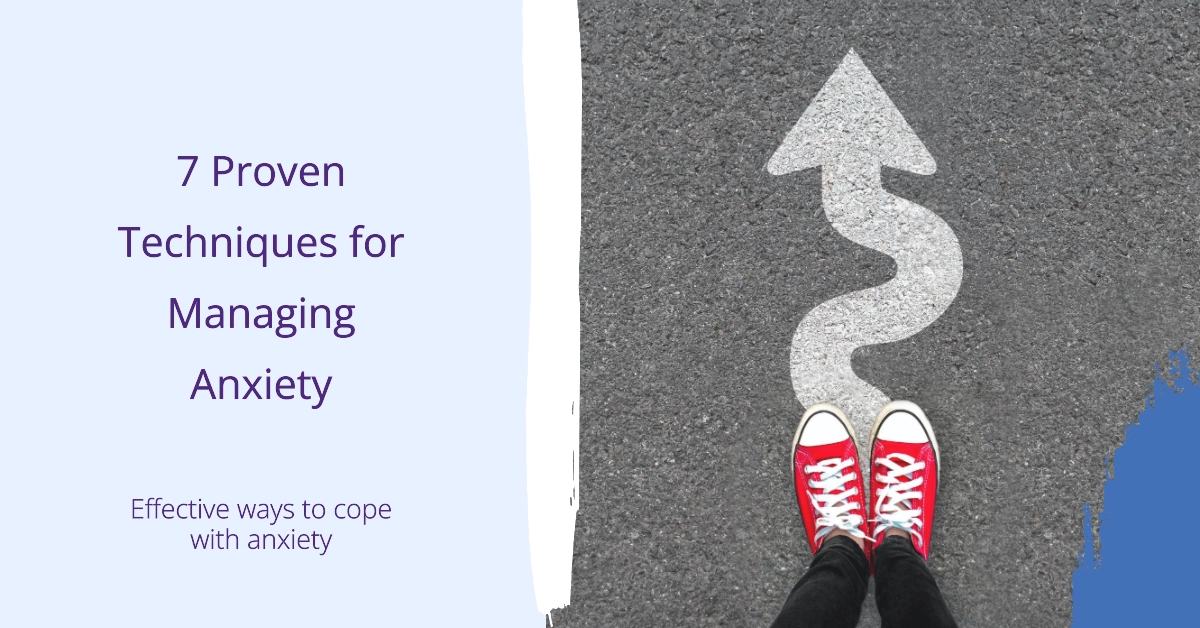Anxiety is a common and often debilitating mental health condition that affects millions of people worldwide. It can manifest in various forms, including generalized anxiety disorder, social anxiety disorder, panic disorder, and more. If you’re someone who experiences anxiety, you’re not alone, and there are effective strategies you can employ to manage and alleviate your symptoms. In this comprehensive guide, we’ll explore seven proven techniques for managing anxiety and regaining control over your life.
Understanding Anxiety
Before delving into the techniques, it’s essential to understand what anxiety is and how it affects you. Anxiety is characterized by excessive worry, fear, or nervousness about future events or situations. It can lead to physical symptoms such as a racing heart, sweating, trembling, and muscle tension. Persistent anxiety can interfere with your daily life and overall well-being.
Technique 1: Deep Breathing Exercises
One of the most immediate ways to combat anxiety is through deep breathing exercises. When you’re anxious, your body goes into “fight or flight” mode, triggering the release of stress hormones. Deep breathing can activate your body’s relaxation response, reducing the impact of these hormones.
To practice deep breathing, find a quiet and comfortable place to sit or lie down. Close your eyes and take a deep breath in through your nose, counting to four. Hold your breath for a count of four, and then exhale slowly through your mouth for a count of four. Repeat this process several times until you begin to feel more relaxed.
Technique 2: Progressive Muscle Relaxation
Progressive muscle relaxation is a systematic technique that involves tensing and then relaxing different muscle groups in your body. This method helps you become more aware of muscle tension and can promote relaxation.
Start by sitting or lying down in a comfortable position. Begin with your toes and work your way up to your head, tensing each muscle group for a few seconds and then releasing. Pay close attention to the sensation of relaxation as you let go of tension. This technique can be particularly helpful before bedtime to promote better sleep.
Technique 3: Mindfulness Meditation
Mindfulness meditation is a practice that involves focusing your attention on the present moment without judgment. It can help you become more aware of your thoughts and feelings, ultimately reducing anxiety.
Find a quiet space and sit comfortably. Close your eyes and bring your attention to your breath. Notice the sensation of each inhale and exhale. If your mind wanders, gently bring it back to your breath without judgment. Start with just a few minutes a day and gradually increase the duration as you become more comfortable with the practice.
Technique 4: Cognitive-Behavioral Therapy (CBT)
Cognitive-behavioral therapy is a well-established therapeutic approach for managing anxiety. It focuses on identifying and challenging negative thought patterns and beliefs that contribute to anxiety. Working with a trained therapist can help you develop healthier thought patterns and coping strategies.
CBT techniques include keeping a thought diary, where you record your anxious thoughts and then challenge their validity. Over time, this can lead to a more positive and balanced mindset.
Technique 5: Regular Exercise
Exercise is not only beneficial for physical health but also for mental well-being. Engaging in regular physical activity can help reduce anxiety by increasing the production of endorphins, the body’s natural mood lifters.
Find an exercise routine that you enjoy, whether it’s jogging, yoga, swimming, or dancing. Aim for at least 30 minutes of moderate-intensity exercise most days of the week to experience the anxiety-reducing benefits.
Technique 6: Healthy Diet and Nutrition
Your diet can play a significant role in managing anxiety. Consuming a balanced diet rich in fruits, vegetables, whole grains, and lean proteins can provide essential nutrients that support brain health and reduce anxiety symptoms.
Additionally, reducing caffeine and alcohol intake can help minimize anxiety, as these substances can exacerbate symptoms. Staying hydrated is also crucial for maintaining good mental health.
Technique 7: Seek Support
Last but certainly not least, seeking support is essential when managing anxiety. Whether through friends, family, or professional therapists, sharing your feelings and experiences can provide valuable emotional support. Contact us today for a complimentary consultation to answer any of your questions.
Joining support groups or online communities dedicated to anxiety can also be helpful, as they offer a sense of belonging and a platform to exchange coping strategies with others facing similar challenges.
In Conclusion
Managing anxiety is a journey that requires patience and persistence. By incorporating these proven techniques into your daily life, you can take significant steps toward reducing anxiety and improving your overall well-being. Remember that it’s essential to consult with a healthcare professional for a comprehensive assessment and personalized treatment plan. With dedication and the right support, you can regain control over your life and lead a happier, less anxious existence.






